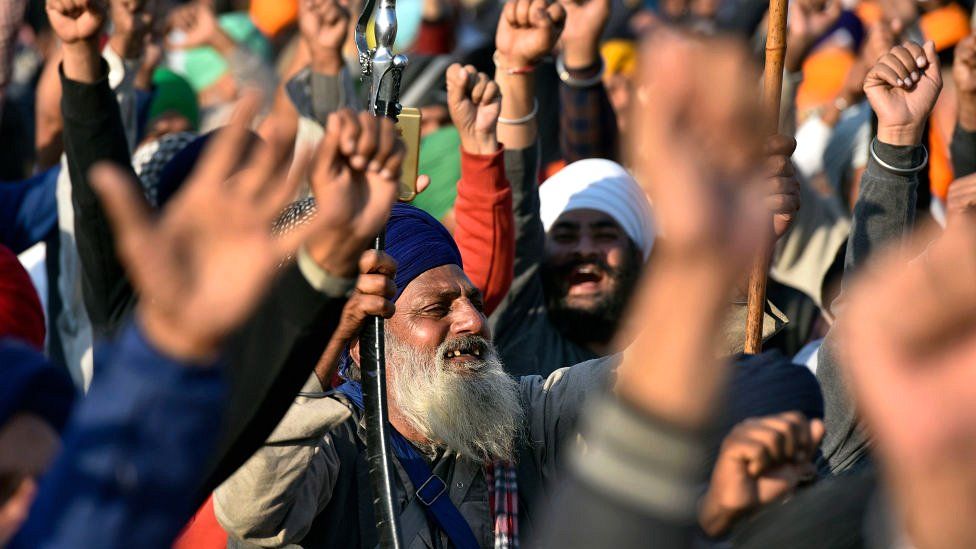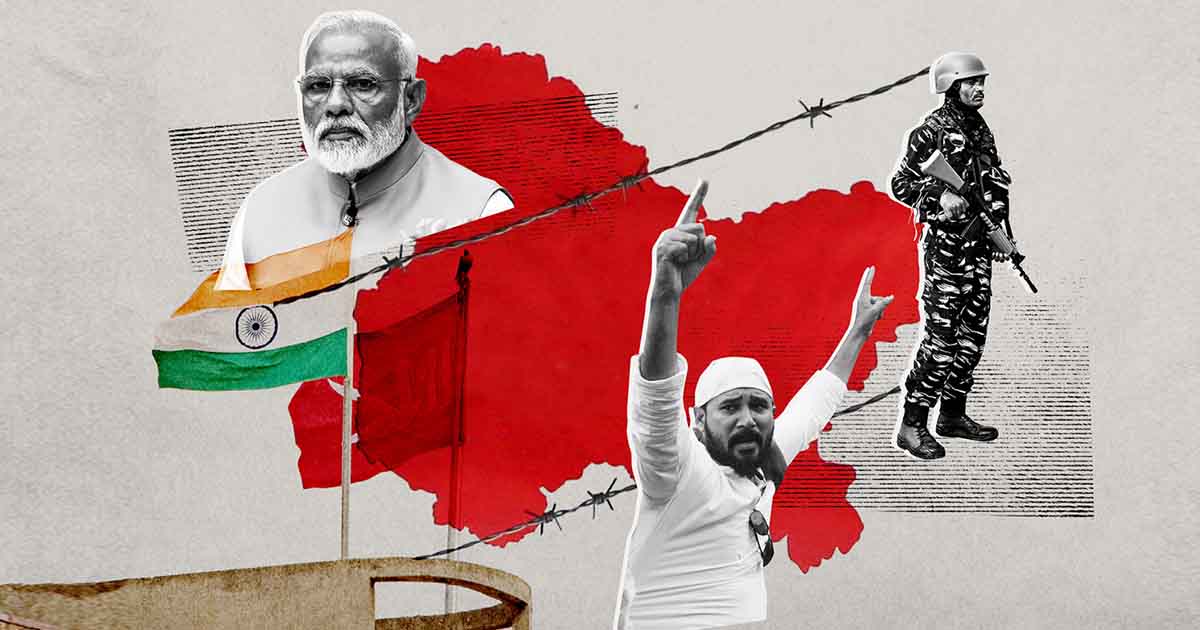
By Shruti Menon
With protests continuing against new farming laws in India, the Indian government has repeatedly said that the changes would actually benefit farmers.
Back in 2016, Prime Minister Narendra Modi and his ruling Bharatiya Janata Party (BJP) promised they would double farmers’ incomes by 2022.
So what’s the evidence that rural livelihoods have been improving?
What’s happened to rural incomes?
More than 40% of India’s workforce is engaged in agriculture, according to the World Bank.
There are no official figures for rural household income in recent years, but there is data on agricultural wages (an important part of rural income) which shows the rate of growth slowing down between 2014 and 2019.
And India has seen rising inflation in the last few years, with World Bank data showing that consumer price inflation grew from just under 2.5% in 2017 to nearly 7.7% in 2019.
This has eaten into wage gains.
India conducted surveys in 2013 and 2016 which showed an increase in farmers’ incomes in absolute terms of nearly 40% over that period.
However, a report by the Organisation for Economic Co-operation and Development (OECD) in 2018 estimated that in real terms, farmers’ incomes increased by just 2% a year over those three years.
The report also makes clear that these farmers’ incomes were just one-third of those for non-agricultural households.
Agricultural policy expert Devinder Sharma believes farmers’ incomes in real terms have remained stagnant or even declined for several decades.
“An increase of a couple of thousand [rupees] a month doesn’t make much difference if we account for inflation,” he says.
He also points to the rising costs that farmers face, as well as the wildly fluctuating prices they receive for their produce.
It’s also worth adding that in recent years, there have been periods of extreme weather such as droughts, which have seriously affected livelihoods.
In 2017, a government committee reported that incomes for farmers would need to grow by 10.4% each year from 2015 for them to double by 2022.
That’s not been happening.
It also said the government needed to invest 6.39bn rupees (£64bn; $86bn) in the agricultural sector.
Data on both public and private investment shows it has been falling.
In 2011-12, investment in agriculture as a percentage of total investment stood at 8.5%.
It rose to 8.6% in 2013-14 and then fell, staying more or less flat at between 6% and 7% since 2015.
An official government survey carried out in 2016 by the National Bank for Agriculture and Rural Development, found that in the three years up to this point, the average amount of debt that farmers were liable for had more than doubled.
Reality Check has previously looked at the plight of farmers facing high levels of debt and the political debate over whether they should receive debt relief.
There have been attempts at federal and state level over the years to give farmers direct financial and other support, such as subsidies for fertilisers and seeds and special credit schemes.
In 2019, the federal government announced a direct cash transfer scheme targeting 80 million farmers.
Under the scheme, the government provides income support of 6,000 Rupees (£61; $81) per year. BBC


